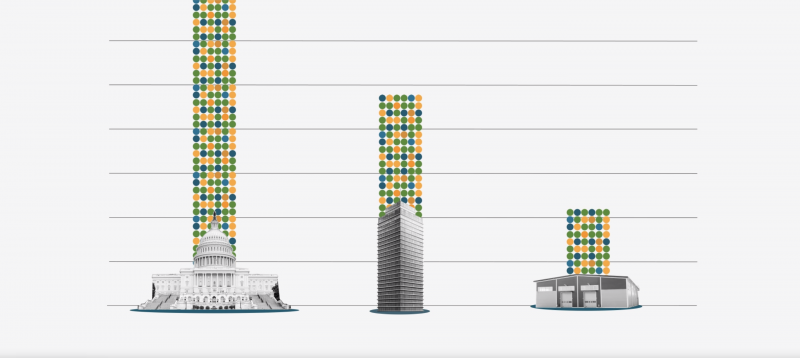The rate at which data is growing is astounding.
Consider these statistics: the world’s data will go from 33 zettabytes in 2019 to 175 zettabytes in 2025, according to IDC’s “Data Age 2025” whitepaper. A study by Cisco estimates that IP traffic will reach 4.8 zettabytes by 2022, and Domo found that 2.5 quintillion bytes of data are created each day.
Considering that the federal government is among the world’s biggest generators of data, those numbers can be especially daunting. Government officials have worked to address those concerns.
In June 2019, President Trump established the Federal Data Strategy as a “framework of operational principles and best practices that help agencies deliver on the promise of data in the 21st century.” More recently, the strategy’s 2020 Action Plan specified ways to optimize the federal government’s entire data portfolio with a concentration on three main areas: security, privacy and confidentiality.
The strategy’s goal is to help agencies, but it also creates challenges that must be addressed. For example, it calls for agencies to break down the silos, in which much of the government’s data sits, to educate employees about information sharing and to restructure data formats and storage. None of those changes will be a quick fix, but when followed, the actions outlined will allow government agencies to maximize data, improve security and better serve constituents.
One silver lining is that this data-centric effort comes during a governmentwide push for IT modernization. That can go a long way toward removing silos and restructuring formats. But to make the most of the opportunity – and of next-generation technologies – agencies need their own strong data strategy. That’s because data can often be lost in the focus on buzzworthy tech such as artificial intelligence (AI) and machine learning (ML).
The fact is, data is the foundation for those technologies and it’s critical for government agencies to adopt a standalone data strategy focused on data governance that is separate from their cloud or hardware strategy.
A strong data strategy involves decisions with data at the forefront, not lumped in with AI, ML, cloud migration and other technologies. Although these are crucial elements of any modernization effort, a standalone data strategy can help agencies avoid vendor lock-in and account for hardware, software and containerization.
The government handles a great deal of highly sensitive data such as personally identifiable information and data pertaining to national safety. So security and governance are critical components of any data strategy being developed by federal, state and local agencies.
More specifically, key elements of a robust data strategy include:
- Finding ways to share data among agencies.
- Establishing data standards.
- Cultivating a data-savvy workforce through training and hiring.
- Building a foundation for using emerging technologies such as AI to make sense of all that data.
Once all of that is in place, agencies can look at their strategy holistically. Cloud can tie all of those elements together. For one, its scalability is ready-made for the explosion in data collection and storage. Second, it facilitates data sharing, and third, it paves the way for the use of AI.
But it’s important not to limit your choices by choosing one particular cloud model. One solution is to use open source software and approaches to move traffic from data centers to the cloud and to use open source platforms to support AI-enabled capabilities.
Here are the key questions you should ask when looking at possible solutions:
- Is it optimized for hybrid and multi-cloud environments, delivering the same data management capabilities across data centers, private, and public clouds?
- Does it allow multiple analytic functions to work together on the same data at its source, eliminating costly and inefficient data silos?
- Does it maintain strict enterprise data security, governance, and control across all environments?
- Is it 100% open source, with open compute and open storage, ensuring zero vendor lock-in and maximum interoperability?
Government agencies are embracing data-driven applications, but they’re held back if they build them on outdated systems and legacy infrastructure. To remedy that, agencies need to look to the Federal Data Strategy as a baseline to expand on and create their own data strategies.
This article is an excerpt from GovLoop Academy’s recent course, “Critical Success Factors When Building A Secure and Flexible Data Strategy,” created in partnership with Cloudera. Access the full course here.





Leave a Reply
You must be logged in to post a comment.